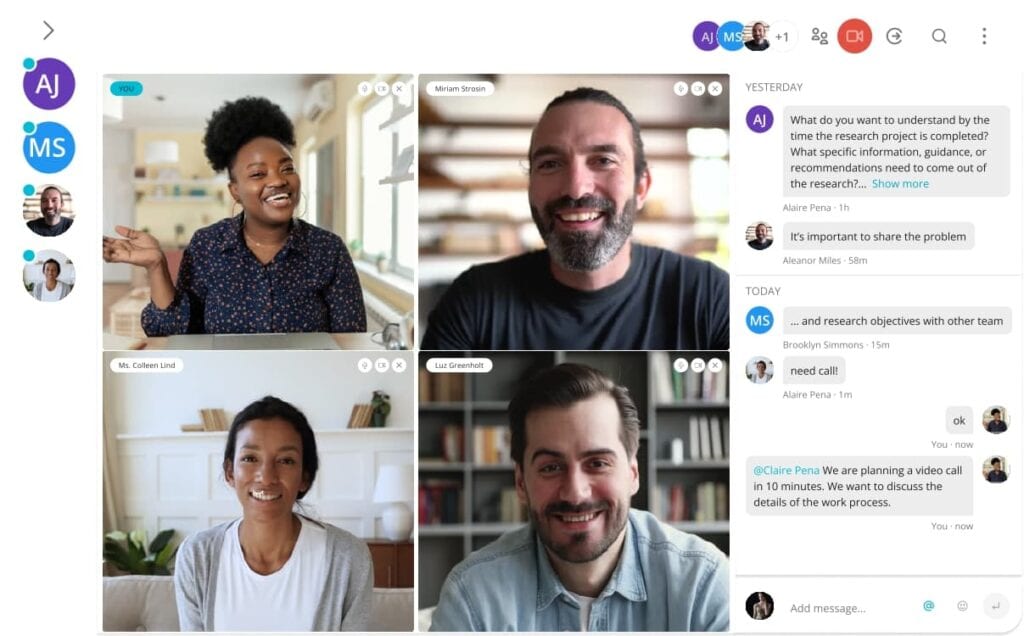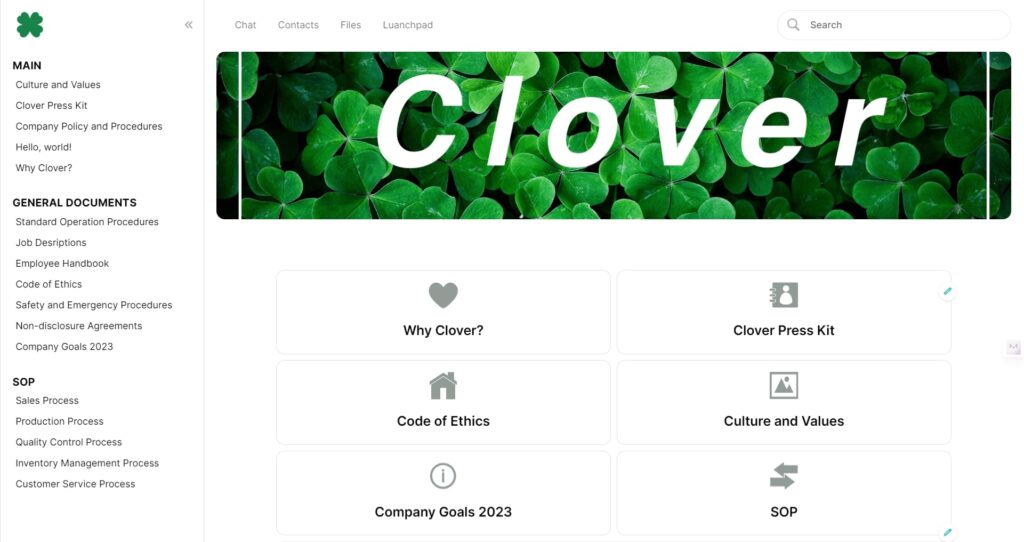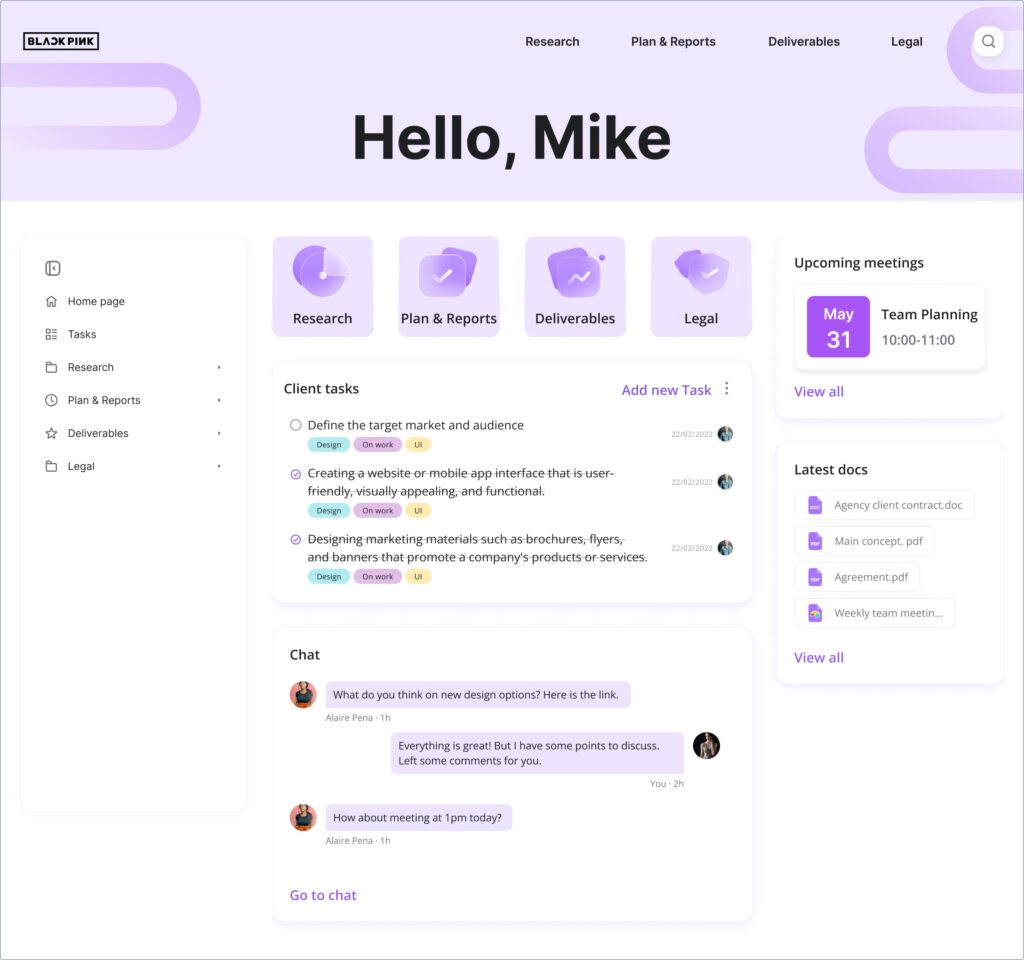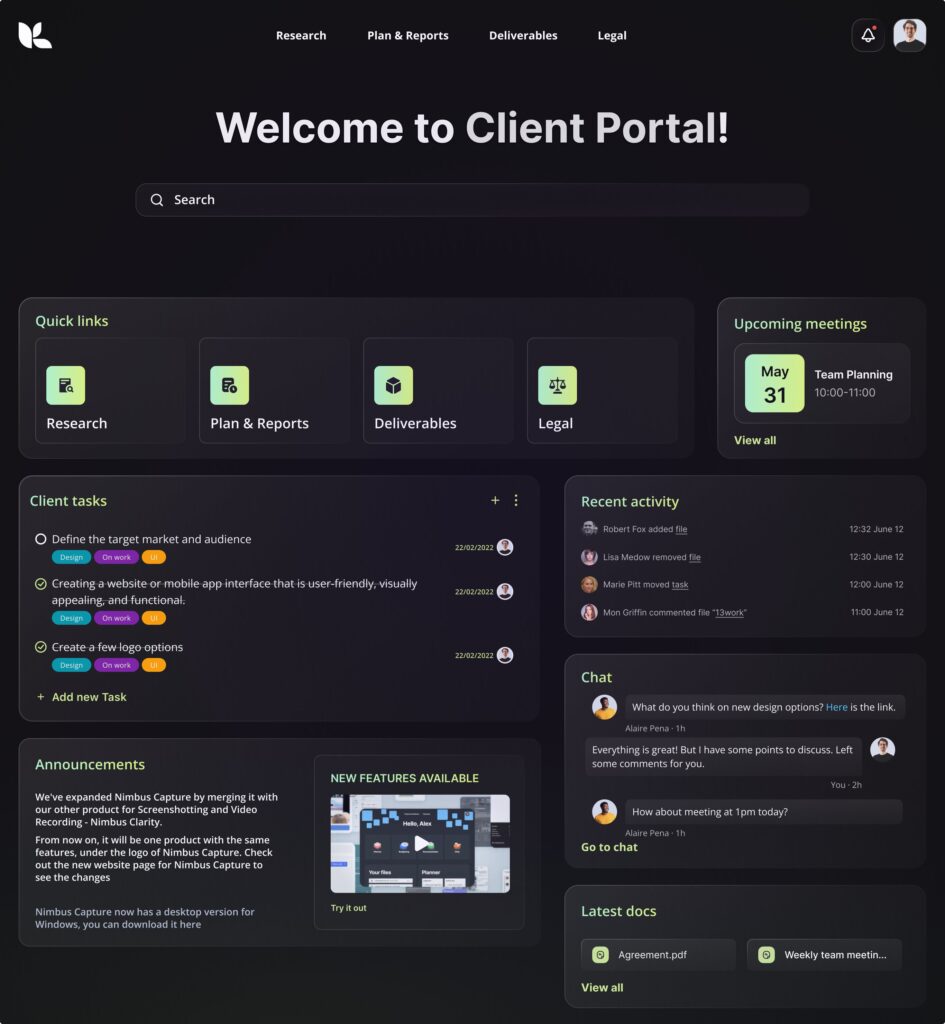
Onboarding vs. Implementation: Do You Need Both?
- 9 Min read
We’ll explore strategies, best practices and tools for creating a successful SaaS Customer Success Strategy that improves recurring revenue as well as retaining customers with high levels of satisfaction.
To build an effective team dedicated solely to achieving these objectives, we’ll look into building high-performing teams utilizing innovative technology available today that can help drive momentum towards achieving desired goals set by any organization or company aiming for greatness through their loyal clientele base. Let’s dive into customer success.
SaaS businesses should prioritize customer success teams, as client satisfaction leads to customer loyalty and satisfaction. Having a proactive approach combined with an experienced, dedicated customer success manager is essential for ensuring continuous value delivery—up to 90% of SaaS revenue depends on this. Software specifically designed to improve the effectiveness of such teams can be deployed in order to maximize results in terms of increased customer retention and higher levels of customer satisfaction and customer success.
Positioning SaaS customer success or customer success in SaaS service at the core allows companies within this industry to gain a competitive advantage and customer acquisition. By helping clients reach their goals, they form bonds that will guarantee future growth opportunities while fostering positive relationships between consumers and providers. Taking full advantage of these strategies brings about greater satisfaction rates, which ultimately boosts business development prospects down the line.

Having an excellent customer success team and customer success managers is a necessity to ensure any SaaS business reaches its full potential. Managers need communication, empathy and understanding of what customers require in order to make sure they are getting the most out of their product/service experience and achieve their customer success goals. To cultivate this type of high-performing squad, focus should be placed on recruiting competent personnel that suit certain roles needed for your objectives as well as budgeting resources into training and development initiatives within the group and encouraging cooperation. This article will discuss each component thoroughly, so you have all the details necessary to create a remarkable customer success team that promotes both satisfaction levels amongst clients plus growth within your organization’s endeavors going forward.
The recruitment of suitable staff to build your SaaS customer success team is an important task. Look for individuals with strong communication abilities, problem-solving aptitude and the ability to develop relationships. These are team members who have experience in web technologies and are devoted to meeting consumer requirements as well as having a mixture of sales knowledge and technological expertise.
These qualities will ensure their accomplishment when it comes to managing customers effectively.
As much importance needs to be given to soft skills, too, when seeking out CSMs. These include the ability to develop trusting bonds between clients, terrific verbal exchange capabilities, careful attention to small details, active listening, empathy and honesty and openness. These skills help them understand and fulfill demands successfully, leading to increased retention rates along with growth opportunities.
Without a doubt, these attributes play a significant role in facilitating successful client service roles, so these need to be considered during recruiting processes to ensure one obtains only the best personnel.
Continual growth and development of your customer success team is essential to maintain up-to-date knowledge about current industry trends and practices. These teams are crucial in helping new customers understand the onboarding process for your SaaS platform and use your product towards a successful outcome.
Investments in efficient training programs will be advantageous when aiming at reaching their full potential as customer success managers—there are various options like Gainsight Customer Education, ICMI’s ‘Managing difficult customers’ course or Udemy’s CSM Fundamentals available online. Other than this, specialized workshops such as the Customer Success Strategy Workshop by CSM Practice can help ensure optimum standards in delivering remarkable consumer service, which ultimately contributes to the long-term prosperity of your SaaS business.
For a great customer experience, teams consisting of customer success, sales and products are needed to cooperate. If they work together efficiently, their goals become achievable. It allows them to strengthen relationships with customers as well as guarantee that the requirements of patrons will be met due to the proper implementation of features in products.
To ensure strong ties between SaaS companies and different departments, a few steps can help: set up correct communication principles, create an atmosphere based on confidence and accountability, plus put into practice project-handling tools—these permit team members to build bonds among each other (also delegate one contact for every squad) and encourage inventiveness by sharing ideas openly. Synergy brings improved satisfaction and customer success rates from users and leads to long-term partnerships which all contribute to business growth.
Having a well-planned customer success policy is key for looking after customers’ needs and handling their issues. It involves comprehending each client’s goals, tracking performance indicators, helping with the customer journey, giving desired outcomes and putting processes in place. This helps you progress your SaaS business while also boosting earnings.
In subsequent sections, we will look more closely at these steps to build an efficient customer success manager strategy that not only gives users satisfaction but helps maintain income growth, customer retention as well and the overall expansion of your company.
Having an in-depth understanding of what your customers want to achieve is paramount for tailoring the assistance and products/services you offer, so they will be best suited towards their customer success. Once you have acquired knowledge of their goals, it’s easier to accommodate those needs, which helps ensure they’ll get great results with whatever product or service you provide.
Onboarding users effectively should also not go unnoticed as part of any customer journey since this ensures a smoother transition into using said product, making sure clients reap all its benefits from the start. Customer advocacy & referrals are equally important: when people experience positive outcomes with your company, only then can they confidently advocate it to others, thus generating more business along the way!
Finally, renewing subscriptions constantly and retaining patrons properly guarantees everyone gets the most out of SaaS contracts, leading to high retention rates and customer success, which is beneficial for both parties involved.
Monitoring customer health scores is essential for recognizing and managing clients who may be at risk. This score pulls together multiple measurements to provide an accurate, predictive assessment of customers, which can aid in understanding them better. By keeping track of this metric, SaaS companies can reduce churn by quickly detecting factors hindering client success and customer acquisition, discerning the patterns between triumphs or failures and gaining insight into their engagement level. And instituting personalized treatments to optimize outcomes. Doing so will ensure your customers’ longevity while also promoting overall business growth as well—a win-win!
Customer success teams are encouraged to use customer success software and/or playbooks that outline benchmarks, scripts and strategies for delivering successful customer outcomes. Playbooks like Partnership Starter, Customer Onboarding Journey or Business Review guide customers through the steps they need to take in order to reach their goals quickly and effectively. These documents provide insight into best practices that will help any customer achieve their desired objectives with ease and enhance customer loyalty.
Maximizing customer success in SaaS business can be made easier by taking advantage of technology. Various tools, such as CRMs, customer success program, client onboarding software and analytics solutions provide actionable insights to improve their processes. By employing these methods correctly, customers’ behavior will become clearer for better decision-making.
To delve deeper into this topic, we need to go over the benefits each solution provides—doing so allows us to see how they support customer success within our business model successfully while keeping the same tone throughout all communication channels with them.
CRM systems implementation can be highly beneficial for SaaS customer success managers in many ways, including consolidating customer data and interactions, providing improved customer support team and customer success tools, creating an uninterrupted experience for customers, which leads to better retention rates as well as enhanced revenue growth on the customer journey map.
Top CRM platforms that work with SaaS companies include FuseBase , HubSpot CRM, Salesforce, Microsoft Dynamics 365, Zoho CRM, monday.com, Freshworks, SugarCRMcDIGContacts & Teamgate—all of these ensure useful analytics and sales reports that allow you to predict potential customer behavior. This leads towards successful Customer Relationship Management (CRM).

To ensure an effective customer onboarding process and ongoing customer support, SaaS customer success managers and customer success teams should use training tools to their advantage. With these solutions in place, customers can enjoy a seamless transition into your product or service while being properly equipped for long-term success.
Tools such as Userpilot, Venture Harbour, Help Scout, Planhat HubSpot and Intercom offer great benefits when it comes to smoothing out the onboarding process and continuing education initiatives that enable you to make sure all old and new customers are able to reach their desired goals. But you should not forget about your customer support team. They are a crucial part of customer support, from acquiring customers to gaining valuable feedback.
Customer success can be improved through the use of analytics and reporting tools, which help you measure key metrics such as customer lifetime value (CLV), net promoter score (NPS), customer success analyst and churn rate. This data-driven approach will enable better decisions to increase customer satisfaction and
customer success, retention and growth.
Tools like Userpilot, Venture Harbour, Help Scout, Planhat HubSpot or Intercom offer features that facilitate tracking progress towards these goals for SaaS customers specifically—making it easier to understand how your efforts are affecting their outcomes in terms of CLV & NPS. These Customer Success Tools aid in understanding what actions lead most effectively to maximizing overall performance associated with Customer Satisfaction levels over time.
Measuring core metrics is essential to evaluate the impact of your customer success initiatives. Churn rate, Customer Lifetime Value (CLV), Net Revenue Retention (NRR) and Net Promoter Score (NPS) give valuable information about customers’ contentment levels as well as places for improvement. We will look into each of these factors in more detail below, examining their value and how they can be used to assess what effect customer success strategies have on a SaaS business’s performance over time. To grasp an understanding of the magnitude of growth achieved with regard to loyalty from customers, analyzing CLV offers great insights that should not be overlooked when assessing Customer Success efforts. NPS provides insight into overall satisfaction by measuring direct feedback between you, the provider and those who purchase/use products or services from you, specifically focusing on pricing, quality, etc.
For SaaS customer success managers, measuring customer churn rate is essential as a high attrition number could be an indication of customer dissatisfaction. Customer churn rate represents the proportion of customers who stopped using the product or service over some time. By keeping track of it, you can find areas to enhance your client success plan and reduce customer loss. Calculating customer churn statistics involves dividing those that are left in a certain period by the initial amount and multiplying with 100. Companies should typically aim for values below 5%, which implies good satisfaction levels among users.
For SaaS businesses, calculating Customer Lifetime Value (CLV) helps them understand their profits over time and strategize how much they should invest in retaining current customers versus gaining new ones for growth. To work out CLV, divide the Average Revenue Per Account by a company’s customer churn rate. By grasping your clients’ lifetime worths, you can make shrewd decisions on allocating resources and planning an effective customer success manager strategy, both of which will increase business expansion opportunities. Realizing these insights empowers companies to maximize the long-term returns from each client across the entirety of its lifecycle.
Measuring your NPS is a great way to gain insight into customer satisfaction and loyalty. This metric looks at the difference between promoters, who have an NPS score of nine or higher and detractors, whose scores are six or lower. SaaS companies with a high-performing NPS range from 28 to 50—this indicates excellent customer success manager strategy outcomes for both customers and businesses alike! Keeping tabs on your own NPS can inform you about how well customers view their experience with you.
To effectively support your SaaS business and achieve customer success in SaaS, it’s important to establish practices that address customers’ individual needs. Here are some key strategies you should consider.
In this section, we’ll delve deeper into each strategy by providing useful information that can be used to enhance your efforts toward driving successful customer outcomes.
In order to offer a highly personalized service or customer success management, companies must be capable of tailoring customer interactions and customer support according to the individual needs of each member of their customer base. Being aware of customers’ specific requirements and challenges enables organizations not only to provide the desired level of satisfaction but also to increase their recurring revenue with improved outcomes. What’s crucial is a commitment to helping customers succeed.
There are some pioneering SaaS businesses that demonstrate how successful personalization can lead to success: Pull&Bear, Amazon, Coca-Cola, Slack & Afterpay have all managed efficiently to engage clients through custom experiences. Gaining insights from these leaders in the industry and creating customer success teams is key for any company aiming for growth by creating tailored user journeys that foster loyalty as well as ensure constant revenue streams.

Creating efficient ways for customers to get in contact with your customer success team and sales team is important when trying to build strong relationships and provide immediate customer support while keeping customer data safe and protected. Below are some communication methods you can consider.
Having these channels of communication established helps form great customer experiences, which leads to more satisfaction and increases retention rates as well as growth opportunities. On top of conventional routes of communicating, utilizing social media platforms and messaging apps can also aid in providing faster assistance while meeting consumers’ needs through preferred channels, such as instant messaging applications like Facebook Messenger. This allows for stronger service delivery tailored around satisfying each individual’s wants and needs. This helps foster positive gains ahead throughout all aspects of customer success.
Regularly assessing and updating customer success strategies is essential for maintaining successful performance and providing the best service to new clients and existing customers. By looking at trends, obtaining feedback from clients and modifying your processes accordingly, you can identify areas that need improvement and then act on them with new approaches to generate better results both commercially and for those you serve.
SaaS companies wanting to improve their existing CS systems may consider understanding what metrics of success apply, reviewing data, crafting a personalized onboarding process, offering proactive assistance and consistently monitoring & evaluating outcomes. Getting input from users while constantly innovating methods suited specifically to meet each client’s needs is also important. These steps must be taken if companies want sustained excellence over time when it comes to achieving desired aims.

FuseBase offers a sophisticated blend of client and team collaboration features, making it a pivotal tool for customer success in SaaS. Beyond providing a dedicated “dining area” for clients and a virtual “kitchen” for internal teams (we’ll explain more below), such as customer success teams, FuseBase enhances customer success through its innovative approach. One key factor is the inclusion of customer success keys, such as personalized client portals that serve as dynamic collaboration spaces. These portals grant clients access to deliverables and empower them to engage seamlessly with internal teams, fostering effective communication, which helps gain new customers and keep existing customers.
Key Features of FuseBase:
FuseBase is an essential asset for SaaS customer success, offering a comprehensive suite of features designed to enhance collaboration, communication and overall project success. Its innovative approach to combining internal and external cooperation positions it as a strategic tool for SaaS companies aiming to achieve long-term growth, customer success and satisfaction.
To summarize, customer success in SaaS is pivotal for customer experience, retention and satisfaction, as well as the long-term development of a SaaS company. Creating high-performing customer success managers and customer success teams with an effective strategy combined with technology upgrades, customer success tools and proper measurements can help unlock its full potential to reap excellent benefits from this endeavor. It is important to gain insights into customers’ individual requirements, preferences and goals while continuously improving processes so that personalization in interactions becomes seamless which ultimately leads to greater loyalty resulting in company growth.
Need Expert Guidance? FuseBase Delivers SaaS Success – Talk to Our Experts!
Customer success has multiple advantages, from improved relationships with customers to reduced churn and higher retention. It also leads to greater brand loyalty, more opportunities for upselling or cross-selling products/services, as well as increased customer satisfaction and customer success function, all of which combine into a great return on investment. This unlocks the maximum potential value offered by the product or service that companies provide and as a bonus, you get excellent customer feedback.
SaaS customer success or customer success in SaaS is an approach that revolves around meeting customer lifecycle and customer needs and helping them achieve their objectives. Now, we can take a look into defining customer success. This involves offering guidance, onboarding, nurturing relationships with customers and providing assistance whenever needed to ensure the greatest possibility of contentment from using the product. This ensures customers have every opportunity available for a successful experience when utilizing their chosen software-as-a-service solution.
A customer success strategy aimed at proactivity is beneficial for SaaS companies in terms of boosting customer satisfaction, retention and growth. Such a tactic helps them tackle any challenges their customers are facing while attending to the necessary needs they may have.
SaaS companies sell SaaS services and help with customer success. Try to get an NPS score ranging from 28 to 50, meaning customers are quite content and devoted. This range implies that customer satisfaction is high.
Found it useful? Share the article with your community
Get weekly tips and insights on how to grow your business